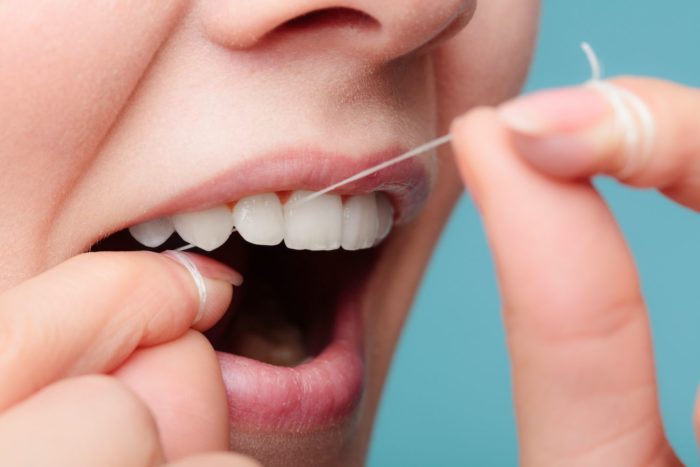A thorough and proper dental hygiene routine is incomplete without flossing. It is just as important to floss as it is to brush your teeth! Brushing your teeth removes plaque from the surfaces of your teeth. Flossing removes plaque and food particles from in between your teeth, where your toothbrush can’t reach.
Plaque is the sticky, yellowish substance that builds up on your teeth and other surfaces in your mouth. If plaque is not removed properly, it can cause cavities, serious tooth decay, bleeding gums, and even gum disease. A poor dental health routine increases the risk of gum disease. The excess bacteria in your mouth can also eventually wreak havoc on your entire body.
Many people brush their teeth as recommended by dentists. But a lot of people don’t floss as often as they should or even floss at all. One poll revealed that nearly 20 percent of Americans do not floss, which is problematic for proper dental health care.
Flossing is very important for your oral health, but it is imperative that you are flossing correctly. It is possible to damage your teeth and gums if you are not using the proper flossing technique.

What Floss Do I Use?
If you want to floss your teeth correctly, you have to first select what kind of dental floss or tools you want to use. There are several kinds of dental floss that you can choose. Usually, it just depends on your personal preference for its use. Perhaps the tightness of your teeth may be a factor in choosing your floss as well.
Dental tape is a common type of floss that is flat like a ribbon. It is able to be used if you have larger spaces in between your teeth. If the space between your teeth is tighter, you may want to use standard floss, which is a thin strand of nylon that can easily fit between your teeth.
Orthodontic work or restorative pieces, such as bridges, may steer you to super flosses, which is a floss that has three different sections of floss—a stiff end to move underneath appliances; a spongy portion to move around orthodontic work; and regular floss.
How Do I Floss My Teeth?
To floss, unravel a longer portion of dental floss—roughly 12-24 inches, and wind it around two fingers (usually your index or middle fingers). Leave about an inch or two to thread between your teeth. Be sure to hold the floss taut with your thumbs so that you have control of the floss and so that it will move smoothly between your teeth.
Place the floss between two of your teeth and gently move the floss up and down on the sides of your teeth. Make sure that you give attention to both sides of your teeth. Be careful not to hit your gums as this can cause pain or discomfort by scratching or bruising.
Once you get to your gum line, gently curve the floss around your gums (like a C shape) to adequately get between your teeth and gums. Repeat this process until you have flossed between all of your teeth.
